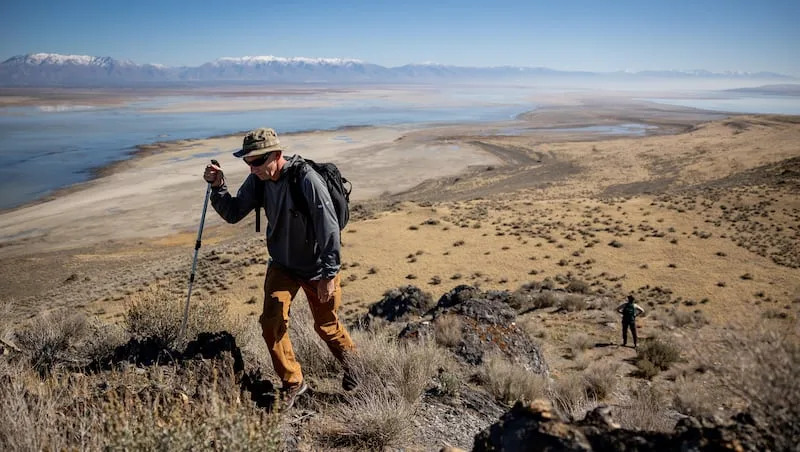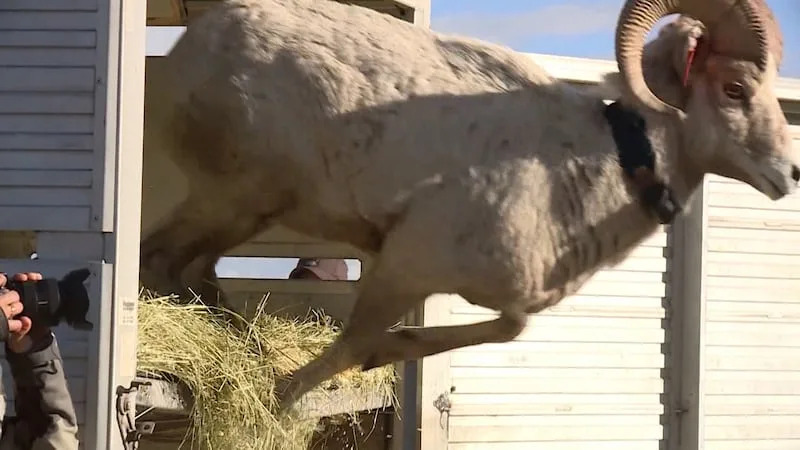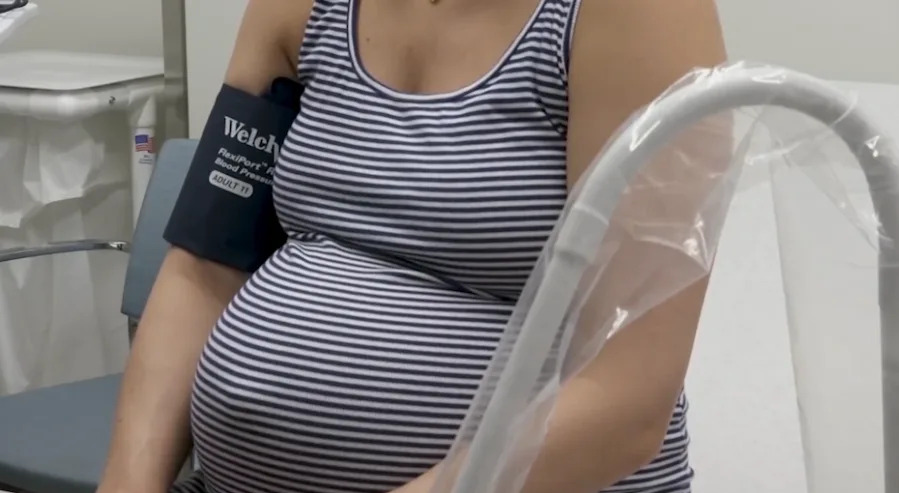
Bighorn sheep are thriving five years after returning to Antelope Island, but herds could spread out to another Great Salt Lake island someday under a proposed change to the state’s species management plan.
Utah wildlife officials this week unveiled a few tweaks to their 10-year bighorn sheep and mountain goat management plans, which were adopted in 2018.
Some of the proposed adjustments are needed to account for recent legislative changes, such as adding a statement explaining a process leading up to a transplant — a process of taking animals for one herd and moving them to another — or a reintroduction into wildlife, said Rusty Robinson, once-in-a-lifetime species hunt coordinator for the Utah Division of Wildlife Resources, in a video explaining the adjustments.
Statements about how the division involved public hunters in disease prevention would also be included, as well as ways to better communicate depredation hunting permits and other language tweaks.
The division is also seeking to add Fremont Island, located toward the northeast end of the Great Salt Lake, and Boulder, Garfield County, to its list of potential reintroduction sites for future Rocky Mountain and desert bighorn sheep.
Bighorn sheep have, historically, spread out across the state. They’re one of the more consistent ungulates in the West, inhabiting every mountain range and river drainage in Utah at one time or another. In looking for options to help future populations, Fremont Island seems to make sense, Robinson told KSL.com.
It has a steep, rugged terrain with an openness that offers sheep to see their surroundings, which they prefer. It also neighbors Antelope Island, which serves as a key nursery population for Rocky Mountain bighorn sheep in Utah, following the loss of most of their old herd to a respiratory disease between 2018 and 2019.
Fremont Island is also very remote. People can access it, but boating from Antelope Island State Park, about 6 miles away, is the preferred method and there are no motor vehicles allowed on the island, according to the Utah Division of Forestry, Fire and State Lands, which manages the nearly 3,000-acre island.

There is some wildlife, like coyotes on the land, but it’s mostly empty of predators. It’s located in an area of the state with some of the lowest cougar population densities in the state, which is the species’ biggest predator challenge, Robinson adds. It’s also far away from domestic livestock or other bighorn sheep that could spread disease.
“As we were trying to expand that nursery program and maintain populations of healthy sheep — and different places that we can use for future transplants — Fremont Island is one of those places that jumps out as another potential place to apply that same program,” he said.
There are no immediate plans to bring the species to the island, but the division’s proposal would open the door to bringing bighorn sheep to the island someday.
The same goes for Boulder. The Calf Creek area has an ideal habitat for desert bighorn sheep, but there are none in that area right now. That’s why it is also being proposed to the list of new sites to bring sheep.
The proposed changes to the plan were recommended as part of a planned update to the 2018 plan. Drought and disease can impact herds, but Robinson said population numbers are generally good right now. State wildlife officials maintain a list of potential new relocation sites to help grow numbers when needed to maintain a healthy population.
The Utah Wildlife Board is expected to vote on whether to accept the changes during its Sept. 18 meeting at Eccles Wildlife Education Center, 1157 S. Waterfowl Way in Farmington. Public comment on the proposal is open through the end of Sept. 10.








Comments